The Enduring Community of Chicago Beer
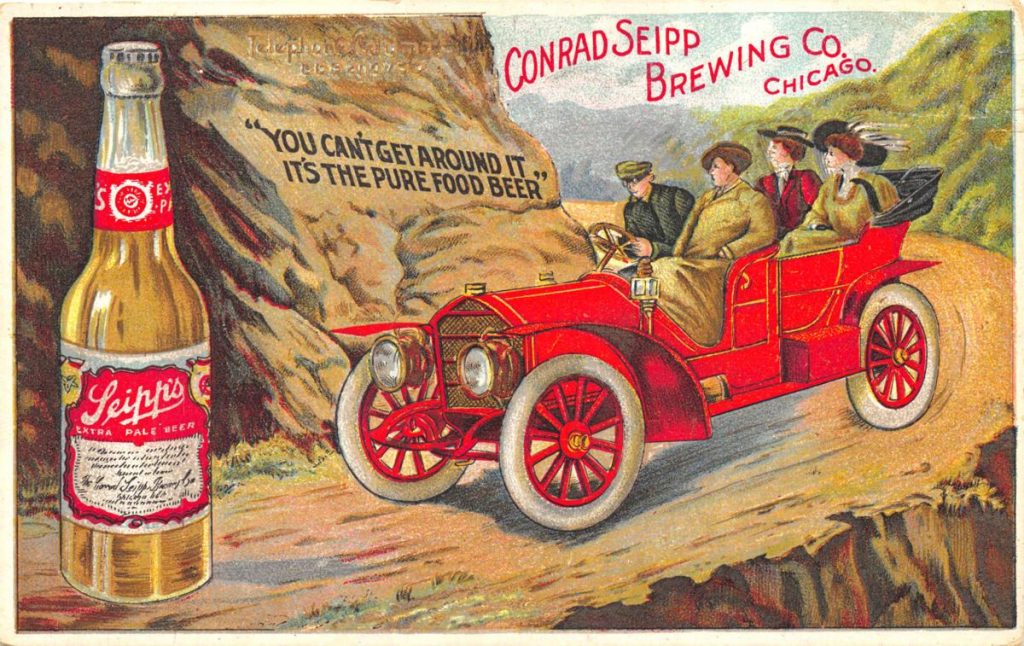
In search of the pure food beer (Courtesy of June Sawyers.)
Scottish by birth and a Chicagoan by heart, June Sawyers has written more than 25 books.
Her prolific catalog includes “Praying With Celtic Saints, Prophets, Martyrs, and Poets,” “Dreams of Elsewhere: Selected Travel Writings of Robert Louis Stevenson” and a couple of my favorites, “Bob Dylan: New York” and “Racing in the Street: The Bruce Springsteen Reader.” She teaches at the Newberry Library in Chicago.
I’ve known Sawyers for many years.
I did not peg her as a beer person.
But she has just released “Chicago Beer (A History of Brewing, Public Drinking and the Corner Bar”) [$21.99, Arcadia Publishing] It is a sweet 135-page tome about the life of Chicago beer, rolling from nascent breweries through speakeasies to dive bars and the huge craft beer movement.
Sawyers takes a reportorial and sociologist’s view toward her subject without becoming a beer snob. The result is a smooth read with sweet discoveries like the renegade Whitechapel Club on what was called “Newsboys Alley.” Sawyers writes that the group was formed for “serious drinking and newspaper gossip.” Guests included Theodore Roosevelt and boxer John L. Sullivan.
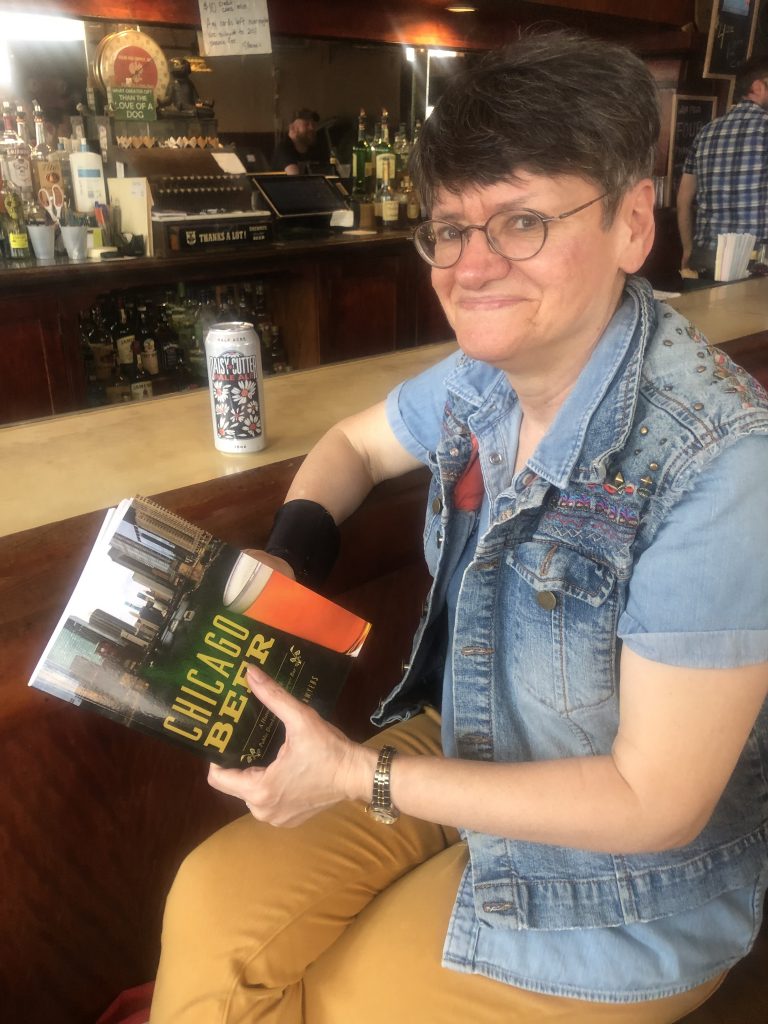
June Sawyers at Archie’s in Chicago (D. Hoekstra photo)
Sawyers is diminutive but her direct nature informs her work in a big way. A couple of weeks ago I met Sawyers at Archie’s Iowa and Rockwell Tavern, 2600 W. Iowa in Ukrainian Village.
Perched like an old lighthouse at the corner of Iowa and Rockwell, it is one of the longest-running corner bars on the north side. Founder Archie Boraca was part of a group of investors who tried to save the Meister Brau band in the late 1960s.
I met June around 3 in the afternoon. The clang of pool balls echoed through the tavern.
A middle-aged woman with a sun-wrinkled face drank with a younger man decorated in tattoos and a red mohawk. Another customer stared at the new retro packaging on a $2 “Happy Hour” can of Hamm’s beer. Our bartender played Peter Tosh’s reggae version of Smokey Robinson’s “Don’t Look Back.” Sawyers fit right in. That is her gift. People move around but they often settle in one place. Sawyers’ work attempts to understand why that is.
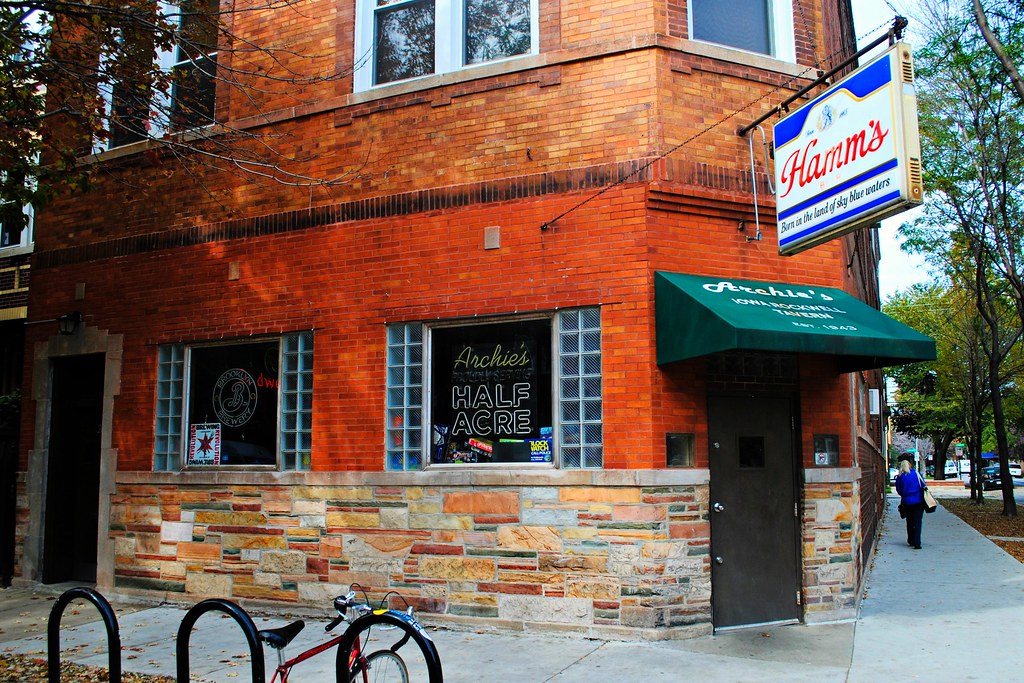
Archie’s Iowa and Rockwell Tavern–a Chicago classic. (Via Archie’s)
“I have always liked beer,” Sawyers said over a can of Daisy Cutter pale ale. “I like the idea of taverns and pubs; of course with the tradition in Scotland and England. But the real reason is that I like the idea of community. That’s what appeals to me.”
Sawyers looked around the room. People have been drinking at Archie’s since 1943. It owns Chicago liquor license No. 177. In late March Archie’s turned over nearly $3,000 of proceeds from an entire Saturday to International Red Cross relief for the Ukraine. That’s community.
Sawyers calls it community in a glass.
She continued, “You need to write about and care about these kinds of places. I wrote a nightlife column (from 1990-93) for the Chicago Tribune, so it’s ongoing for many years. I like IPAs. My favorite Chicago beer, I suppose is Daisy Cutter. To me, there’s no taste to a lager. I like beers that have flavor but not too much flavor. But I also like stouts.”
Sawyers will discuss “Chicago Beer” at 7:30 p.m. June 20 at Jimmy’s Woodlawn Tap, 1172 E. 55th St. Long-time Chicago singer-songwriter Chris Farrell will perform.
Since 1948 Jimmy’s has catered to Hyde Park residents, University of Chicago professors, and poet Dylan Thomas who allegedly drank at Jimmy’s three different times—in one day. “Jimmy’s was started by a guy named Jimmy Wilson,” Sawyers said. “It is one of the most historic taverns that are still around. It’s an intellectual dive bar. Supposedly Obama went there, at least once. It has books on the shelves. It captures a different era where you have the Compass Players (the mid-1950s improvisational theater group), the neighborhood people and they all come together in this bar.”
Sawyers also recognizes dearly departed South Side Black neighborhood bars like Theresa’s Lounge, the subterranean blues joint at 4801 S. Indiana Ave., and Gerri Oliver’s Palm Tavern, 446 E. 47th St.
Sawyers will also appear on July 17 (Time TBA) at Montrose Saloon, 2933 W. Montrose Ave., with the honky-tonk band John Ballantyne’s Crazy Heart. Singer-songwriter Ballantyne is from Scotland.
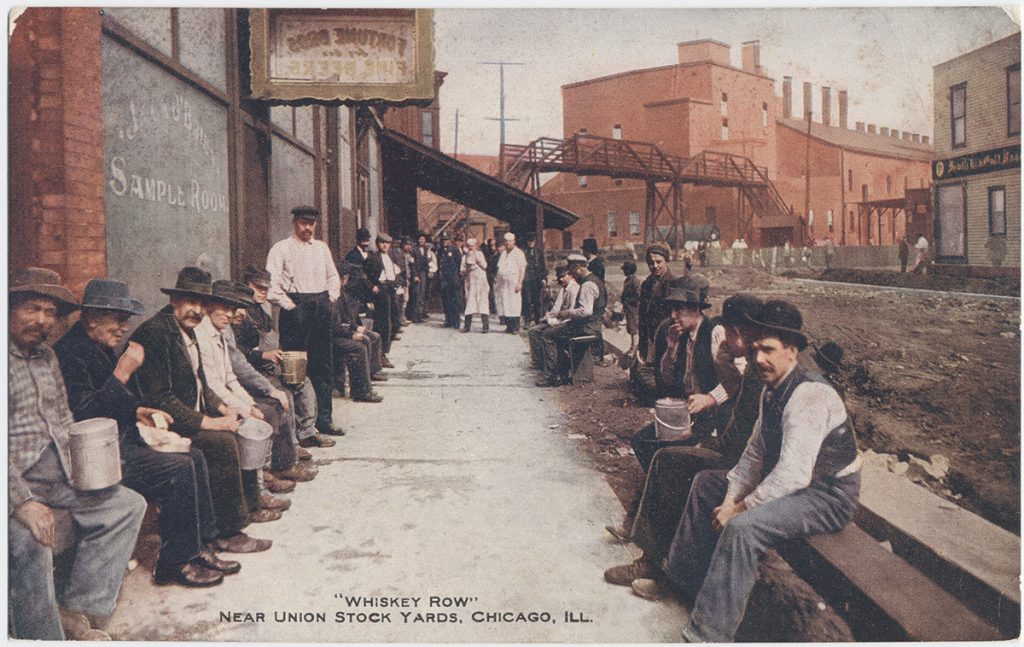
Whiskey Row was a series of taverns that were favorites with slaughterhouse workers at the Chicago Union Stock Yards. (Courtesy of the author.)
Sawyers was born in Glasgow, Scotland. She came to Chicago with her parents Thomas Charles and Elizabeth Sawers and four siblings when she was ten years old. Her father was a carpenter whose company went bankrupt. He wanted to start over. His best friend sponsored the Sawers family (June added the ‘y’ to her name) in Chicago and Thomas wound up working for the friend at 29 S. L Salle Street.
“I don’t consider myself a Chicagoan, although I suppose most people do,” Sawyers explained. “I self-identify as a Scot in perpetual exile–and also a British citizen. As a journalist, I like the idea of being an outsider as a permanent observer.”
Her family first settled in Wicker Park before moving to Avondale and Jefferson Park. These were neighborhoods filled with working-class corner bars.
“They’re going away,” Sawyers said. “There are changing demographics and changing tastes. During the (mayors) Daley era–both of them, but Richard M. in particular–looks down on the corner bar because it may lead to disorder in the neighborhood or it brings down the value of homes.” Present-day Chicago problems should be so benign.
Sawyers writes that at the turn of the twentieth century Chicago had more than 8,000 saloons. In 2019 that number fell to around 870. She added, “People don’t hang out as much anymore. But there are many good ones left from Kasey’s (her place at 701 S. Dearborn, regarded as the city’s second-oldest tavern) to Archie’s.”
“Chicago Beer” also gives a nod to vintage beer label art and Schlitz tied houses. More than 40 tied houses remain in Chicago. My friends Mike Medina and Laura Coffey Medina have been passionately restoring a tied house they are calling the East Side Tap, 9401 S. Ewing Ave. It is slated to open later this year.
In 1938 the tap was the Joy Tavern with chicken dinners, music, and dancing, according to an ad in the Daily Calumet. The eight-room former boarding house remains in the back of the bar. Workers found affordable housing here in the 1900s. In June 2020 the Commission on Chicago Landmarks recommended landmark status for this building.
“The tied house started in the English part of the United Kingdom,” Sawyers said. “It was a system where the taverns were owned by breweries. Schuba’s (3159 N. Southport) is another example of a Schlitz Tied House. I find the tide house architecture fascinating, too, which includes the famous Schlitz globe. It is ornamental and beautiful. New bars don’t have that distinctive architecture.”
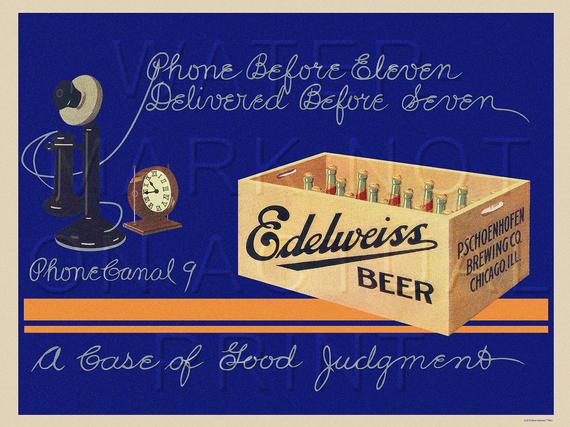
Pre-Door Dash shtick (From the author’s collection.)
Sawyers devoted an entire chapter to “The Craft Beer Revival: Goose Island and Beyond” which includes a tidy three-point definition of “craft beer” which helps out a craft beer novice such as myself. The Chicago Tribune recently reported that there are 250 craft breweries in the Chicago area.
Are craft breweries the corner bar of tomorrow in terms of identity and community? “Absolutely, “ answered Sawyers, who is working on a Midwest coffee house book for the University of Illinois Press. “Especially with the taprooms. It’s the same function. And Chicago has the history of the classic saloon, so it builds on that.”
“Chicago Beer” was born as a guidebook for Roaring Forties Press, an independent publisher in Berkeley, Ca. They went out of business before the pandemic. “I was doing research in the summer of 2018, it was going to be a Chicagoland guide to craft beer,” Sawyers explained. “I was doing sidebars on nearby places like Bell’s in Kalamazoo, Founders Brewing in Grand Rapids, and Three Sheeps in Sheboygan. It’s a combination of before (pandemic) and during.
“About a year and a half ago we sold the rights to Arcadia, a history press. I had to change it completely. It became a narrative. It’s not meant to be a guidebook. There are so many I didn’t include that I could include. What I don’t have in the book I put in my talks.”
“Chicago Beer” is light and less filling. The subject is amplified by more than 30 color images. But the keen research and appointed writing will allow it to find a home in my modest beer book collection alongside Brian Yaeger’s “Red, White, and Brew (An American Beer Odyssey), 2008” and Ken Wells’ “Travels with Barley (A Journey Through Beer Culture in America), 2004.
As my coal-mining Lithuanian grandfather would say, Sveikata!
He liked Stag beer.

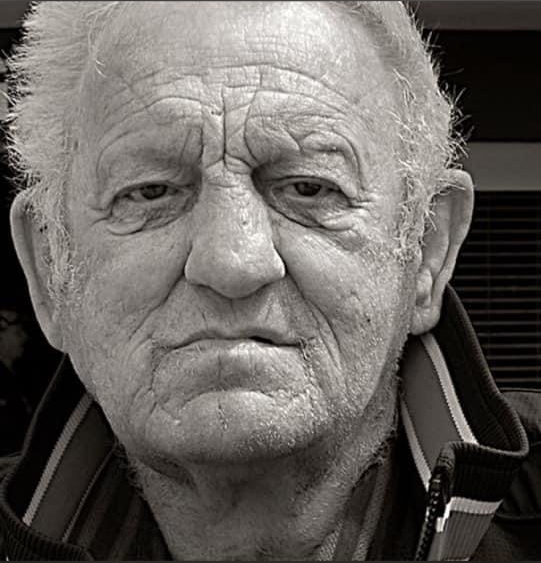


Leave a Response